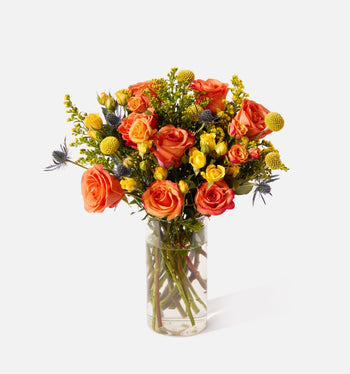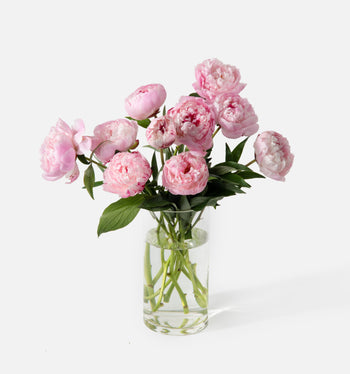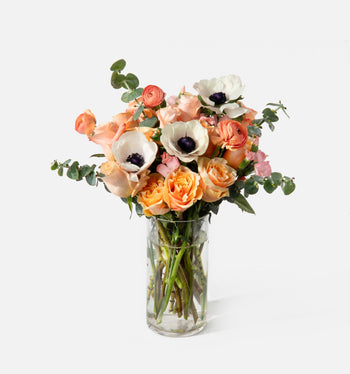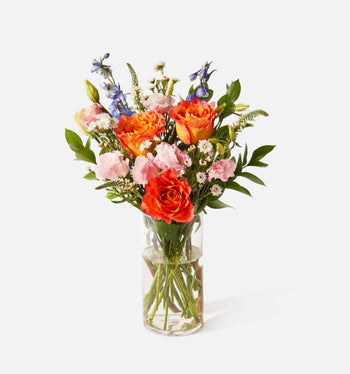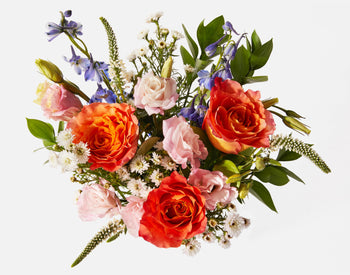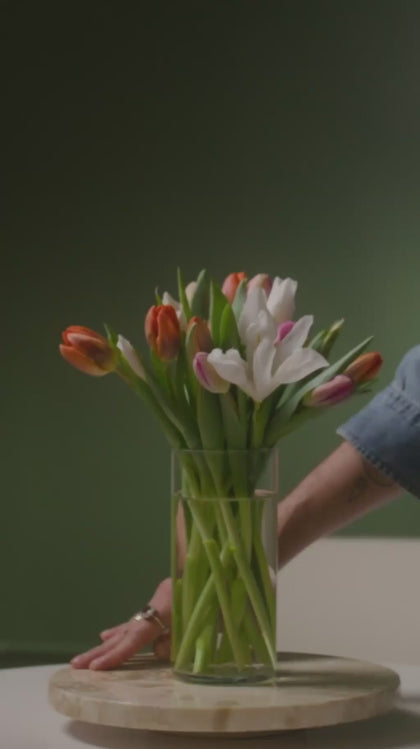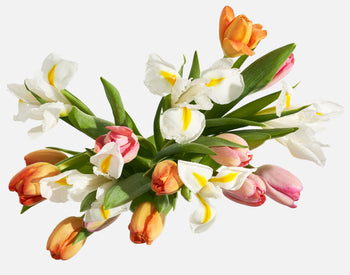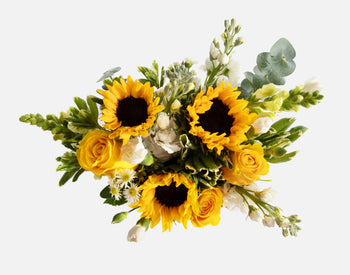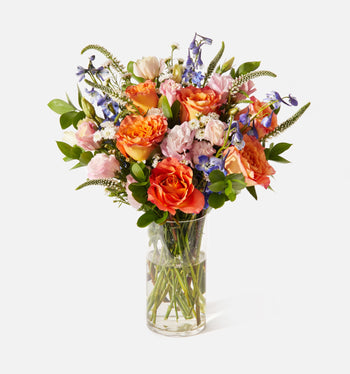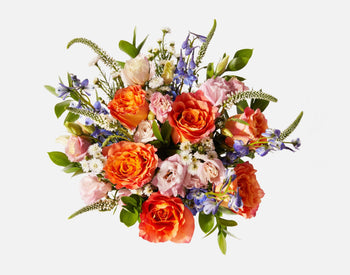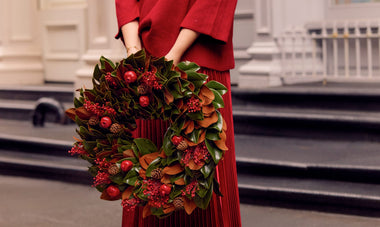Mums, short for chrysanthemums, are beloved flowering plants that bring pops of color to gardens and homes. Their versatility and radiant array of shades make them a staple for fall decor, however, their beauty can be enjoyed year-round with the right care. Whether you’re growing them outdoors, enjoying them indoors, or featuring them as part of a seasonal display, understanding how to care for these flowers ensures their longevity. In this guide, we’ll explore the essentials of mums care to help you keep these flowers thriving season after season.
Mums Care 101
- What Are Mums?
- How to Care For Mums
- How to Choose a Healthy Mum
- How to Keep Mums Blooming All Year
- FAQs
What Are Mums?

Chrysanthemums, more commonly referred to as mums, belong to the Asteraceae family, which also includes daisies and sunflowers. Well known for their intricate blooms, mums come in a wide range of species, such as the pompon, spider, and decorative mums. These flowers are often characterized by their unique growth patterns, vibrant colors, and interesting bloom structure, making them a favorite for gardeners and flower shops.
Native to Asia and northeastern Europe, mums thrive in well-drained soil and sunny conditions. They adapt well to different climates, which makes them a versatile choice for gardens. Mums have fibrous root systems and longer-lasting blooms, making them easily recognizable with lower maintenance needs. With hues ranging from bold oranges and yellows to soft pinks and purples, mums bring unmatched vibrancy to your floral arrangements or gardens.
How to Care For Mums
Caring for mums requires a lot of unique attention to their needs. Whether they’re planted outdoors or kept indoors, we have some specific tips. Let’s break it down:
Outdoor Care

- Sunlight: Mums love full sun! Make sure they receive at least 6 hours of direct sunlight daily to encourage robust growth and vibrant blooms.
- Soil: Plant mums in well-drained, organic soil. Go for slightly acidic soil (pH 6.0-6.5 works best).
- Watering: Water often and consistently, keeping the soil moist but not overwatered. Try to avoid letting the soil dry out completely.
- Mulching: Apply a layer of mulch around the base to keep moisture and regulate soil temperature.
- Pruning: Regularly pinch back stems in early summer to encourage growth and in turn, more blooms. Cut back dying flowers to promote more blooming.
Indoor Care

- Lighting: Place mums in a spot with bright but indirect light. Avoid direct sunlight, which can burn the leaves.
- Watering: Keep the soil moist throughout, watering when the top inch feels dry. Avoid overwatering!
- Temperature: Maintain indoor temperatures between 60-70°F for best growth. Avoid placing mums near cold drafts or heating vents.
- Potting: Use well-draining potting soil and a pot with drainage holes. Re-pot as needed to prevent overcrowding.
- Deadheading: Remove dead blooms regularly to encourage new growth. It helps extend the blooming period.
Additional Care Considerations
- Fertilization: Feed mums with a balanced fertilizer during the growing season to help support growth and blooms.
- Pest Control: Monitor for bugs like aphids and spider mites. Apply insecticidal solution or “neem oil” as needed.
- Seasonal Adjustments: Transition outdoor mums inside during particularly harsh winter weeks or cover their leaves to prevent damage.
How to Choose a Healthy Mum

- Check the Foliage: Look for green leaves that are without spots, wilting, or yellowing.
- Examine the Buds: Choose plants with plenty of unopened buds to ensure a longer blooming period.
- Inspect the Roots: Check that the roots are firm, but not overly root-bound. Healthy roots contribute to better overall plant health.
How to Keep Mums Blooming All Year
Mums can be a year-round delight when you provide them with ample sunlight, water, fertilizing, pinching, and deadheading. We created a short guide to help you provide care during each season:
Spring
- Start mums indoors or outdoors after the last bit of winter.
- Plant in nutrient-rich and well-drained soil.
- Pinch back growth every 2-3 weeks to encourage bushiness.
- Water consistently to keep soil moist.
Summer
- Continue pinching back stems until early July.
- Water frequently during any dry spells.
- Monitor for bugs, treating as needed.
- Provide shade during the extremely hot weeks to prevent wilting.
Fall
- Stop pinching stems to allow buds to develop.
- Adjust watering to account for cooler temperatures.
- Add mulch to retain the warmth of the soil and moisture.
- Deadhead regularly to extend the blooming period.
Winter
- Add a thick layer of mulch around outdoor mums to protect roots.
- Move potted mums indoors before the first cold.
- Cut back stems about 3-4 inches above the ground.
- Store in a cool, dark place indoors during winter.
With their wide array of colors and recognizable floral structure, mums can brighten any space with the right care. Whether you've got a green thumb or a rookie plant parent, following these tips will help you enjoy the beauty of mums throughout the year. From choosing the healthiest plants to mastering their care depending on the season, you'll be prepared to help your mums thrive. Don't forget to explore our mums collection for gorgeous options to elevate your home, office, and gardens.
FAQs
What’s the best time of year to plant mums?
The best time of the year to plant mums is in early spring or late summer. Planting in spring gives them more time to establish roots, while late summer planting is perfect for fall blooms.
How long do mums bloom for?
Mums usually bloom for 4-8 weeks, depending on the variety and care provided. Regular deadheading and optimal growing conditions can extend their blooming period.
Can mums survive winter?
Yes, mums can survive winter with proper care. Hardy mums should be mulched and protected from the cold, while potted mums can be moved indoors.
Why are my mums turning brown?
Browning can be caused by overwatering, underwatering, and pests. Ensure proper watering practices and inspect for signs of bugs.
How often should you water mums?
Water mums deeply 1-2 times per week, adjusting your cadence based on weather conditions. Indoor mums may require less frequent watering but never allow them to dry out completely.


